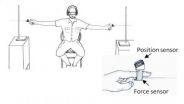"When people talk about contamination from hydraulic fracturing, for instance, they can mean a lot of different things," says hydrogeologist Harvey Cohen of S.S. Papadopulos & Associates in Bethesda, Maryland. "When it's what's happening near their homes, they can mean trucks, drilling machinery, noise." These activities can potentially lead to surface water or groundwater contamination if there are, for example, accidental fuel spills. People also worry about fracking fluids leaking into the aquifers they tap for domestic or municipal water.
On the other hand, when petroleum companies talk about risks to groundwater from hydro-fracking, they are often specifically referring to the process of injecting fluids into geologic units deep underground and fracturing the rock to free the oil and gas it contains, says Cohen. This is a much smaller, much more isolated part of the whole hydraulic fracturing operation. It does not include the surface operations -- or the re-injection of the fracking waste fluids at depth in other wells, which is itself another source of concern for many.
But all of these concerns can be addressed, says Cohen, who will be presenting his talk on groundwater contamination and fracking on the morning of Wednesday, 7 Nov. For instance, it has been proposed that drillers put non-toxic chemical tracers into their fracking fluids so that if a nearby domestic well is contaminated, that tracer will show up in the well water. That would sort out whether the well is contaminated from the hydro-fracking operations or perhaps from some other source, like a leaking underground storage tank or surface contaminants getting into the groundwater.
"That would be the 100 percent confident solution," says Cohen of the tracers.
Another important strategy is for concerned citizens, cities, and even oil companies to gather baseline data on water quality from wells before hydro-fracking begins. Baseline data would have been very helpful, for example, in the case of the Pavillion gas field the Wind River Formation of Wyoming, according to Cohen, because there are multiple potential sources of contaminants that have been found in domestic wells there. The Pavillion field is just one of multiple sites now being studied by the U.S. Environmental Protection Agency (EPA) to learn about past and future effects of hydro-fracking on groundwater.
The same pre-fracking science approach is being taken in some areas to evaluate the seismic effects of disposing of fracking fluids by injecting them deep underground. In Ohio and Texas, this disposal method has been the prime suspect in the recent activation of old, dormant faults that have generated clusters of low intensity earthquakes. So in North Carolina, as well as other places where fracking has been proposed, some scientists are scrambling to gather as much pre-fracking seismic data as possible.
Potentially newsworthy hydro-fracking presentations and sessions will run throughout the meeting, include the following:
MONDAY Paper No. 125-7
Local and Regional Water Supply Planning to Evaluate and Manage Hydrofracking
Presentation Time: 3:35-3:50 p.m., Monday, 5 Nov.
Charlotte Convention Center: Room 213BC
Abstract: https://gsa.confex.com/gsa/2012AM/finalprogram/abstract_212125.htm
Session No. 125: Hydrogeology and Geochemistry of Shales
TUESDAY Paper No. 135-1
Overview of the potential risks of shale gas development and hydrofracturing on water
resources in the United States
Presentation Time: 8:05-8:25 a.m., Tuesday, 6 Nov.
Charlotte Convention Center: Ballroom B
Abstract: https://gsa.confex.com/gsa/2012AM/finalprogram/abstract_208960.htm
Session No 135: Shale Gas Development and Hydraulic Fracturing Impacts on Water Resources in the United States
Paper No. 142-2
Finding frack facts: The literature of hydraulic fracturing
Presentation Time: 8:30-8:45 a.m., Tuesday, 6 Nov.
Charlotte Convention Center: Room 201AB
Abstract: https://gsa.confex.com/gsa/2012AM/finalprogram/abstract_208442.htm
Session No. 142: Geoscience Information: Investing in the Future
WEDNESDAY Paper No. 219-8
Groundwater contamination from hydraulic fracturing - How will we know?
Presentation Time: 10:15-10:30 a.m., Wednesday, 7 Nov.
Charlotte Convention Center: Room 207BC
Abstract: https://gsa.confex.com/gsa/2012AM/finalprogram/abstract_212844.htm
Session No. 219: Hydraulic Fracturing for Resource Development or Remediation: Methods, Results, and Industry-Regulatory Response to Environmental Impacts on Ground and Surface Waters
Paper No. 219-14
History and development of effective regulation of hydraulic fracturing: the genesis of Colorado rule 205A
Presentation Time: 11:45 a.m.-noon, Wednesday, 7 Nov.
Charlotte Convention Center: 207BC
Abstract: https://gsa.confex.com/gsa/2012AM/finalprogram/abstract_210026.htm
Session No. 219: Hydraulic Fracturing for Resource Development or Remediation: Methods, Results, and Industry-Regulatory Response to Environmental Impacts on Ground and Surface Waters
Paper No. 241-2 (Posters)
Pre-hydrofracking regional assessment of central Carolina seismicity
Presentation Time: 9 a.m.-6 p.m., Wednesday, 7 Nov. (authors will be present from 2 to 4 p.m. and 4:30 to 6 p.m.)
Charlotte Convention Center: Hall B, Booth #173
ABSTRACT: https://gsa.confex.com/gsa/2012AM/finalprogram/abstract_209117.htm
Session No. 241: EarthScope and Geoprisms in Eastern North America: Ongoing Endeavors and a Look Ahead (Posters)
Paper No. 241-1 (Posters)
Insights on induced seismicity in Ohio from the Youngstown M4.0 earthquake
Presentation Time: 9 a.m.-6 p.m., Wednesday, 7 Nov. (authors will be present from 2 to 4 p.m. and 4:30 to 6 p.m.)
Charlotte Convention Center: Hall B, Booth #172
Abstract:https://gsa.confex.com/gsa/2012AM/finalprogram/abstract_208780.htm
Session No. 241: EarthScope and Geoprisms in Eastern North America: Ongoing Endeavors and a Look Ahead (Posters)
### Find out what else is new and newsworthy by browsing the complete technical program schedule at https://gsa.confex.com/gsa/2012AM/finalprogram/.
To identify presentations in specific areas of interest, search topical sessions by discipline categories or sponsors using the drop-down menus at www.geosociety.org/meetings/2012/sessions/topical.asp, or use your browser's "find" feature to search for keywords or convener names.
Representatives of the media and public information officers from universities, government agencies, and research institutions, may participate in technical sessions, field trips, and other special events. Eligible media personnel will receive complimentary registration and are invited to use GSA's newsroom facilities while at the meeting. Journalists and PIOs must pay for any short courses or field trips in which they wish to participate.
For information on media eligibility, go to www.geosociety.org/meetings/2012/media.htm. Media personnel may register onsite in the GSA Newsroom (room 204) at the Charlotte Convention Center. Wireless Internet access and a quiet space for interviews will be provided in the newsroom, along with beverages and light snacks throughout the day.
Newsroom Hours of Operation Saturday, 3 Nov., 3 p.m. to 5 p.m. Sunday, 4 Nov., through Tuesday, 6 Nov., 7:30 a.m. to 6 p.m. Wednesday, 7 Nov., 7:30 a.m. to 5:30 p.m.
Newsroom telephone number (incoming calls): +1-704-339-6207 (starting Saturday afternoon).
Contact Christa Stratton, GSA Director of Communications & Marketing, for additional information and assistance.
www.geosociety.org/meetings/2012/


